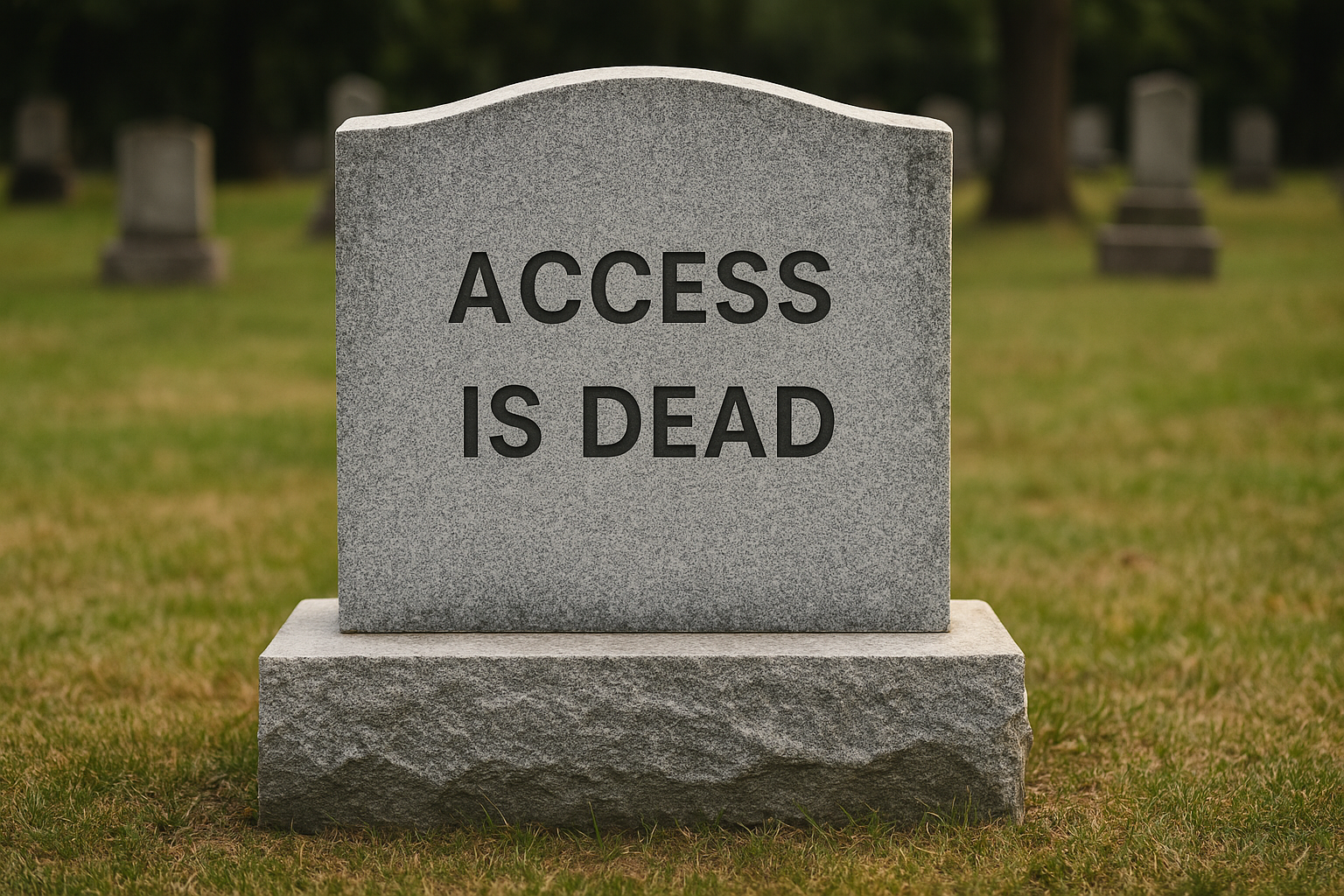Is Microsoft Access Still Relevant in 2025
Every year, someone pops up on the internet to declare: “Microsoft Access is dead.”
They’ll say things like: “It’s old. It’s clunky. No one uses it anymore. Just move to the cloud!”
And yet, here we are in 2025… and thousands of businesses are still quietly running their operations on Microsoft Access. Payrolls get processed. Customer lists get managed. Stock gets counted. All in Access.
So, is Microsoft Access still relevant in 2025? Short answer: yes. Longer answer: yes, but with a few caveats. Let’s dig into why this “outdated” tool still has plenty of life left in it—and how smart businesses are using it today.
Why Microsoft Access Gets a Bad Rap
Microsoft Access has been around since 1992. In technology terms, that’s practically prehistoric. (It’s old enough to have been installed from floppy disks. Remember those?)
Because of that, Access has a bit of a reputation problem.
- Some IT departments sneer at it as “just for amateurs.”
- Some developers hate it because they’ve inherited messy databases that look like a toddler built them.
- And some business owners are told by consultants that Access is insecure, slow, or impossible to maintain.
Here’s the truth: Access isn’t the problem. Bad database design is the problem.
When set up properly, Access is a solid, affordable, and surprisingly flexible platform—especially for small and mid-sized businesses that don’t need the complexity (or cost) of enterprise systems.
The Strengths of Access for Small & Mid-Sized Businesses
So why do people still use Microsoft Access in 2025? Because it gets the job done.
- It’s included in Office 365. If you’re already paying for Microsoft tools, you may already have Access sitting on your desktop, waiting to be used.
- It’s user-friendly. Compared to SQL Server, Oracle, or even cloud-based platforms, Access is approachable. Business users can create forms, queries, and reports without needing to learn a programming language.
- It integrates. Access plays nicely with Excel, Outlook, and other Microsoft products. Need a quick export to Excel for the boss? Easy.
- It scales… up to a point. For a team of 1–20 users, Access can handle everyday operations just fine.
- It’s customizable. Unlike rigid off-the-shelf software, Access can be tailored to fit your business processes instead of forcing you to adapt.
In other words, Access still hits the sweet spot between “spreadsheet chaos” and “expensive enterprise systems.”
Common Myths About Access (and the Truth)
Let’s bust a few myths that keep circulating about Access.
Myth 1: “Access is dead.”
Nope. Microsoft continues to support Access as part of the Office suite, and it still gets updates. It’s not the shiny new toy, but it’s not in the graveyard either.
Myth 2: “Access can’t handle modern data.”
Also false. Access can connect to SQL Server, SharePoint, and other backends. You don’t have to keep everything in one big Access file.
Myth 3: “Access isn’t secure.”
Security depends on implementation. An unsecured Access file on a shared drive? Risky. An Access front-end connected to a secure SQL backend? Much stronger.
Myth 4: “No one uses Access anymore.”
Tell that to the countless SMEs, non-profits, schools, and even government departments still running critical processes on Access in 2025.
When Access Is (and Isn’t) the Right Choice
Like any tool, Access isn’t perfect. It shines in some scenarios and struggles in others.
Access is great for:
- Small to medium databases (tens of thousands of records, not millions)
- Teams of under 20 concurrent users
- Quick-turnaround applications where flexibility is key
- Businesses that already rely on the Microsoft ecosystem
Access is not great for:
- Enterprise-scale applications
- Mission-critical systems requiring 24/7 uptime across hundreds of users
- Businesses that need advanced cloud-first scalability out of the box
That’s why a lot of our work at Ezi Data Solutions isn’t about ditching Access—it’s about modernizing Access so it fits today’s needs.
How to Modernize Access in 2025
Here’s the good news: if you’re hitting the limits of Access, you don’t have to throw it away. There are smart ways to upgrade:
- Split your database. Use Access as the “front-end” (forms, queries, reports) and a secure SQL database as the “back-end.”
- Add a web layer. Give staff a browser-based interface while keeping Access in the background.
- Optimize performance. Compact/repair, index properly, and tidy up your queries. You’ll be amazed at the speed gains.
- Automate reporting. Connect Access to Power BI or Excel dashboards for modern data visualizations.
- Plan a gradual migration. If you eventually want to move to a full web app, we can map out which parts of Access to keep and which to rebuild.
This is where specialists (👋 hello, that’s us) come in. Most businesses don’t need a $200k system overhaul. They just need Access to be faster, safer, and more flexible.
The Verdict: Access Still Has a Place
So, is Microsoft Access still relevant in 2025? Absolutely.
It may not be glamorous, but it remains a practical, cost-effective solution for countless businesses. If your Access database is holding your business together with duct tape and hope, don’t panic. You don’t need to throw it out.
What you do need is the right strategy to modernize it—so it works seamlessly with today’s tools, users, and security requirements.
At Ezi Data Solutions, we help businesses just like yours:
- Fix broken Access databases
- Improve performance
- Connect Access to the cloud
- Migrate to web apps (without losing what works)
Because sometimes, the best tool isn’t the newest—it’s the one you’ve already got, fine-tuned for the future.
👉 Need help with your Access database?
We’ve been fixing, modernizing, and enhancing Access systems for over 20 years. Book a free consultation today and let’s make your Access database work smarter in 2025.
